Shock detail in chopper crash findings
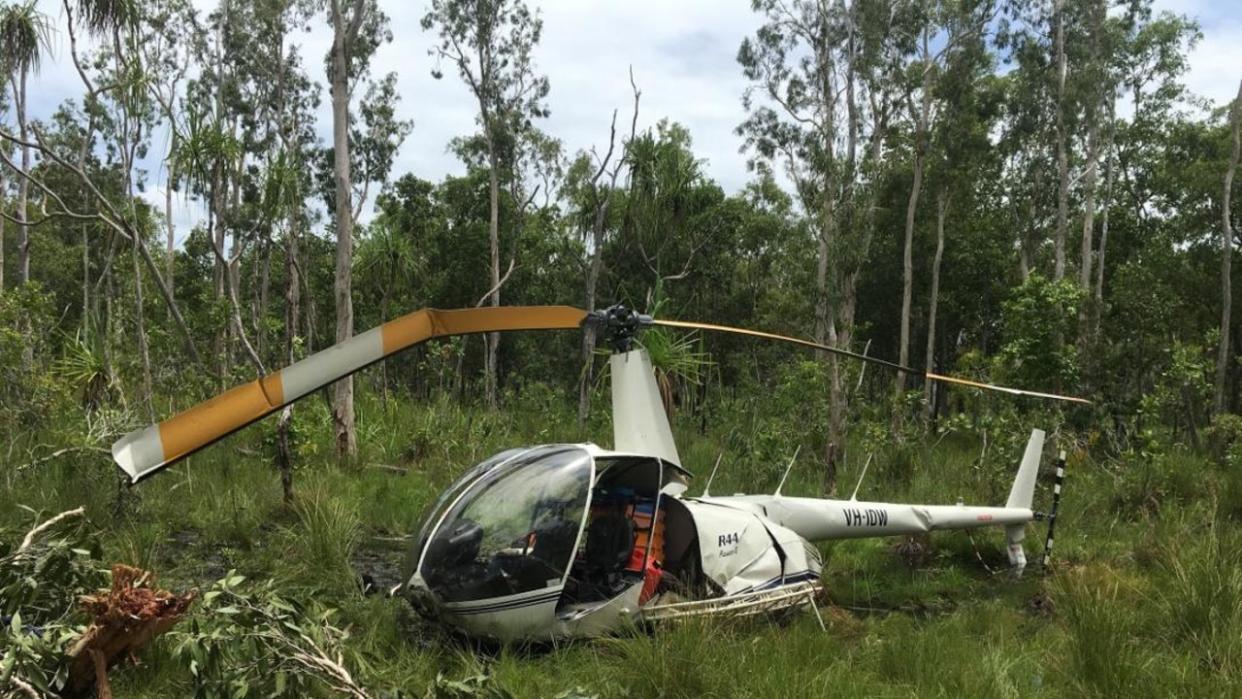
The pilot involved in a fatal helicopter crash in the Northern Territory which killed an Aussie Netflix star told the transport safety watchdog he did not use cocaine, despite tiny amounts of the drug being detected in his system.
Chris “Willow” Wilson was killed when a Robinson R44 helicopter carrying him from a sling line plummeted to the ground near the NT’s King River on February 28 last year.
The pilot Sebastian Robinson was seriously injured, but survived.
In their lengthy report, the Australian Transport Safety Bureau (ATSB) said the crash was likely caused by the helicopter running out of fuel.
But a toxicology report in the ATSB’s findings revealed the pilot was likely exposed to the drug cocaine in the days prior to the flight.
2 metabolites of cocaine – ecgonine methyl ester and benzoylecgonine – at low levels (less than 0.01 mg/L) were detected in the pilot’s system, the report found.
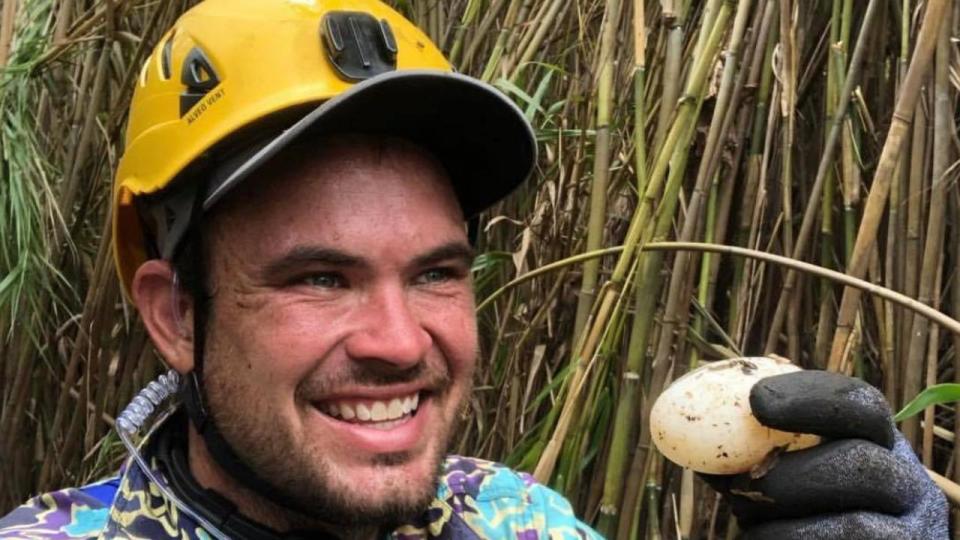
This is despite the pilot insisting he did not use cocaine and had not used any recreational drugs in the past five years.
“These metabolites can be detected in the blood up to 3–4 days after exposure,” the ATSB’s findings state.
“Cocaine itself is generally detectable in blood tests for up to 1–2 days after exposure and was not detected in the pilot’s blood.
“The detected levels indicated the pilot had not been exposed to cocaine within the previous 24 hours and may not have been affected by cocaine on the accident day.”
In the report, the ATSB said the pilot had no reported medical conditions.
The ATSB said there was insufficient evidence this had contributed to the crash.
The helicopter, registered as VH-IDW, was being used for the collection of crocodile eggs in remote parts of the outback.
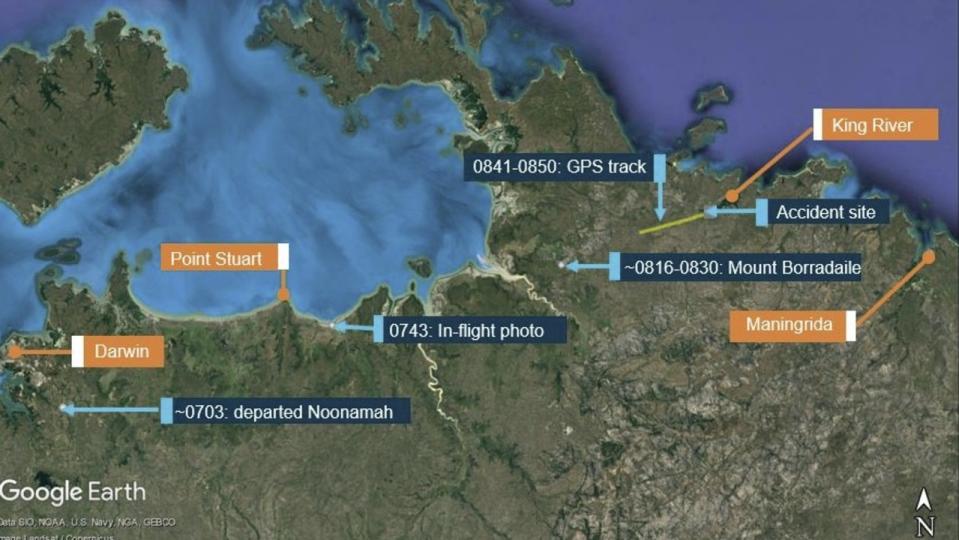
Outback Wrangler star Matt Wright has since broken his silence in the wake of the report, breaking down in a tearful post on his Instagram.
Mr Wright said he was “double-devastated” after losing Mr Wilson, to find out the helicopter had run out of fuel, and of the findings of tiny amounts of cocaine in the pilot’s system.
“Losing Willow doesn’t make it any easier, but not only that, to also find out there was cocaine… in the pilot’s blood,” he said.
“My stance on drugs has been pretty strong; not doing them, not having any of my guys do them.
“To find this out has blown me away.”
Mr Wright said the pilot would not have been flying had he known about it.
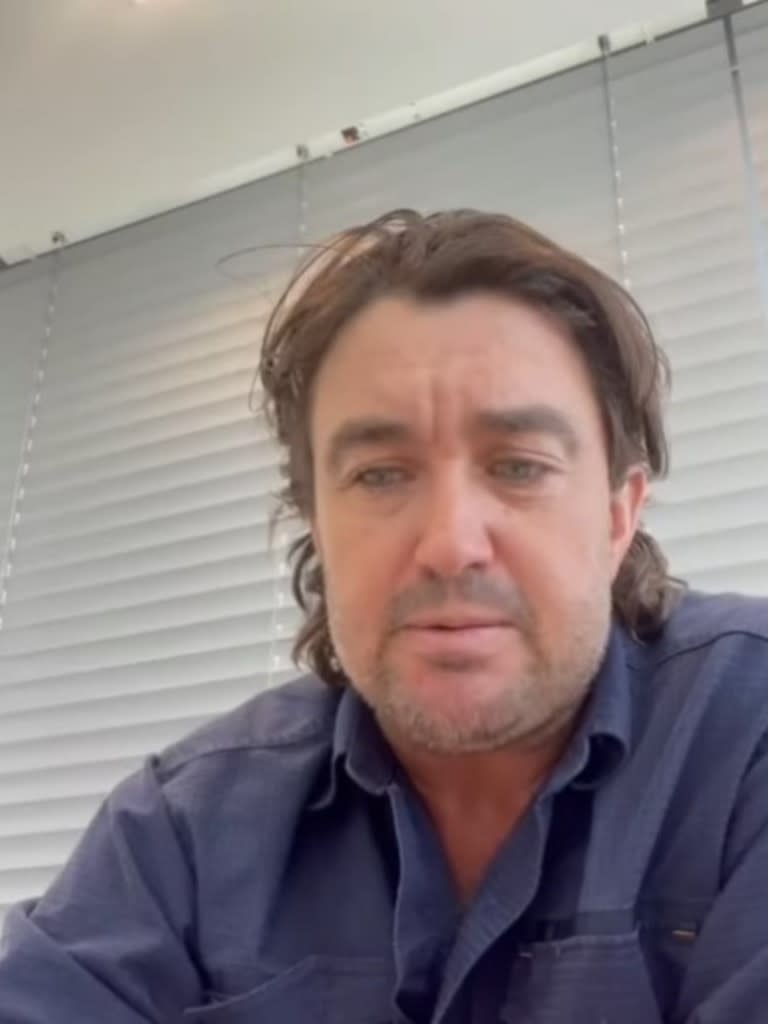

He tearfully slammed the “rumours, false allegations and false reporting” that had hurt himself, his family and Mr Wilson’s family over the last 18 months.
“Nothing’s going to bring our mate back,” Mr Wright said.
“I just hope that this report does bring some closure on how this accident has happened.
“It doesn’t make it any easier.
“The focus of this investigation has been about Willow and myself because we’ve been on TV, but not about the cause of the accident.”
An investigation from the Australian Transport Safety Bureau (ATSB) found the chopper’s engine stopped in flight, likely due to fuel exhaustion.
The bureau outlined the flight path of three R44 helicopters which took off at 7.03am on the morning of February 28.
All three landed at Mount Borradaile for a “hot refuelling” with drums after 8am.
“A witness reported that the 3 R44 helicopters departed Mount Borradaile at about 8.30am to track towards King River,” the ATSB report states.
“One helicopter continued past King River to the northeast and commenced collecting eggs.
“Data for the other two helicopters, including VH-IDW, recorded their arrival near King River at 0850.”
At a clearing near King River, the second helicopter’s crew retrieved a harness from VH-IDW.
The two other helicopters began collecting eggs from nine nests between 9.11am-10.14am.
By 10.24am, they became concerned they hadn’t heard any contact from Mr Wilson or the pilot Mr Robinson.
“They reported (it) was unusual,” the ATSB report states.

One of the helicopters returned to the area where VH-IDW was last seen.
At 10.36am they found the downed VHIDW and the deceased Mr Wilson.
“The helicopter had collided with terrain 44m beyond the sling person, and the pilot lay beside the helicopter having sustained serious injuries,” the ATSB said in their report.
“VH-IDW was located 44m beyond the sling person (Mr Wilson), substantially damaged having collided with trees and terrain.

“The pole was vertical with one end embedded in the ground. About 4m beyond the pole, the long line attachment rings were found, also embedded in wet ground, with the long line loosely coiled over about 8m.
“The egg collector was found wearing a harness, which was intact, firmly secured and attached to the long line, and their helmet was on the ground nearby.
“The long line was not connected to the helicopter.”
The ATSB found the pilot had released the hooks and sling line carrying Mr Wilson beneath the helicopter during the emergency landing procedure.
Mr Wilson was thus dropped from a height that was not survivable, ATSB chief commissioner Angus Mitchell said.
The ATSB investigation found the helicopter the helicopter was likely not refuelled at a depot “about three quarters” of the way between Darwin and the area where they were collecting eggs.
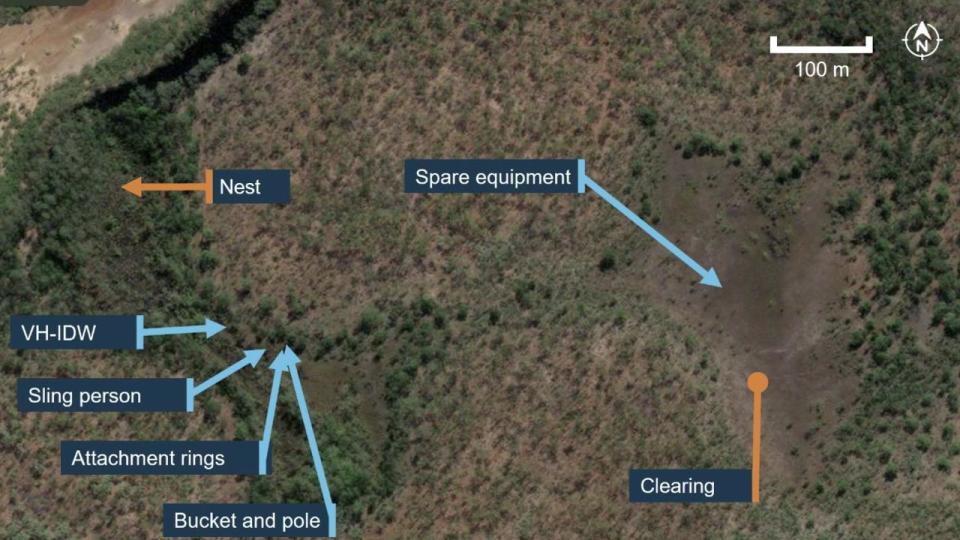
Mr Mitchell said it was likely the pilot did not identify the reducing fuel state before the helicopter’s engine stopped due to fuel exhaustion.
“This accident illustrates the importance of effective fuel management, which is especially critical when operating a helicopter where a fuel-related power loss offers few safe options,” he said.
Mr Mitchell said the investigation found that the operator was not using its safety management system to systematically identify and manage operational hazards.
“As a result, the operator did not adequately address the risks inherent in conducting human sling operations, such as carriage of the egg collector above a survivable fall height,” Mr Mitchell said.
“In addition, and although not assessed on the evidence as having been contributory to this accident, the operator’s history of noncompliance with regulatory requirements, maintenance standards and accurate record keeping, increased the risk level for much of their aviation activities.”
The fatal crash has resulted in Mr Wilson’s co-star Matt Wright being hit with seven charges, including perverting the course of justice and destroying evidence.
The helicopter was operated by Wright’s company, Helibrook.
Mr Wright has “strenuously” denied any wrongdoing.

Two other people – pilot Michael Burbridge and police officer Neil Mellon – are also facing charges over the crash.
Engine defects at the time of the accident were likely to have affected the power output and fuel consumption before the helicopter’s crash, the ATSB’s report found.
“Additionally, Helibrook had likely overrun the helicopter’s maintenance, inspection and overhaul periods, which increased the likelihood of the helicopter experiencing a technical failure or malfunction,” Mr Mitchell said.
The egg collection used a device issued to the operator by the Civil Aviation Safety Authority (CASA) allowing the pilot to carry Mr Wilson from a sling on a 100ft line.
The ATSB investigation found CASA “did not have an effective process for assuring an authorisation – the instrument issued to the operator – would be unlikely to adversely affect safety”.
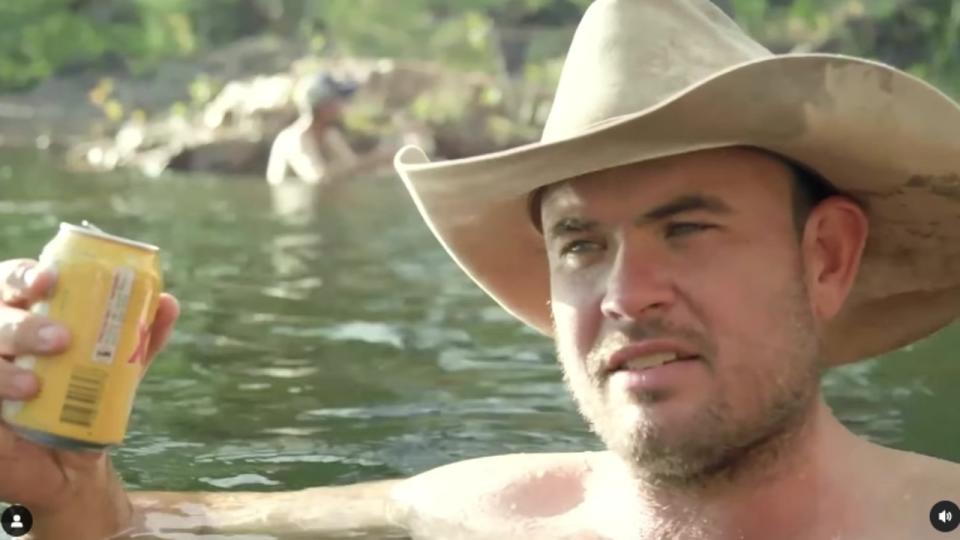
“This resulted in removal of the instrument’s mitigating conditions limiting the height, speed and exposure for the sling person, which permitted carriage of the egg collector above a likely-survivable fall height,” Mr Mitchell said.
“Finally, the ATSB found that the helicopter’s emergency locator transmitter had been removed from its mount prior to the accident,” Mr Mitchell said.
“Therefore, it could not activate automatically, which likely delayed the emergency response.”

 Yahoo Lifestyle
Yahoo Lifestyle 
